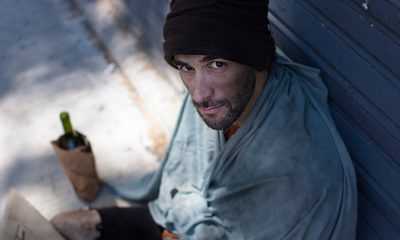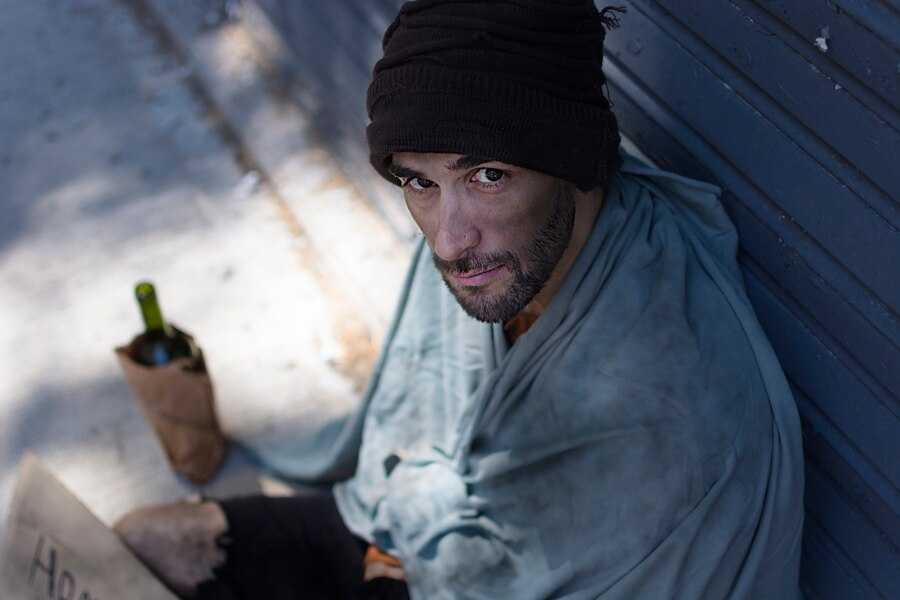Community News
Our Country in Crisis “We’re struggling at the moment to stay fed, have a roof over our heads and gas in the car to get to work.”
Published
6 months agoon

BY SIMONE J. SMITH
Last week I received an email from a member of our community sharing their displeasure with the article that I wrote about Justin Trudeau last week. The individual stated his thoughts about my work, and then went ahead and labeled me a Conservative.
Hah! I had to laugh at that part the most. Clearly the individual had not taken the time to read any of my work over the last few years, because if they had, they would see that I do not affiliate with any political party. As a journalist, I do my best to hold all levels of government accountable, and this article will not be any different.
Community, I see many of you shaking hands, laughing and taking selfies with our Prime Minister and other members of government, and my question is, are you aware that our country is in the middle of a crisis? I am wondering that in the midst of taking selfies, are there any questions being asked about how we are going to correct what is happening across our nation?
We are in a crisis Canada; indicators include the large-scale protests and demonstrations in major cities across the country, which indicates public dissatisfaction and unrest. Let’s talk about the increased incidents of civil disobedience, strikes, and clashes between different groups. Then there are the social disruptions: the rise in crime, and inadequate health care services, something I will get into in a few minutes.
We can’t leave out the fact that there is now limited freedom of press, censorship, and control of media outlets, which has restricted the flow of information. There is something that is not right, and it is only when it is presented as a whole will we truly understand that something needs to be done.
Canadians are dealing with severe financial challenges
New federal data show a quarter of Canadians are struggling to make ends meet, and though pressure is easing gradually from a peak at the end of last year, Prairie provinces and marginalized communities nationwide are facing the worst of it.
The figures come from the latest results of the Canadian Social Survey, a quarterly study by Statistics Canada that tracks key quality-of-life indicators across the country. Survey participants were asked to rate the difficulty that their households faced in meeting their financial needs in the past year, and the results show widespread challenges in doing so.
The study highlighted that nationwide, 26.8% of Canadians reported that meeting financial needs had been difficult, or very difficult in the 12 months prior, up from 24.5% in the second quarter of 2022 and after a peak of 34.8% at the end of last year — the highest recorded since data was first collected in 2021.
In the second quarter of 2023, 26.8% of surveyed Canadians reported that their household needs were difficult or very difficult to meet financially.
Indigenous respondents to the survey living off-reserve reported the highest proportion of household financial challenges among demographic groups, with a striking 43.6% finding it difficult or very difficult to meet their needs.
These financial challenges have created a surge in food bank visits. At the beginning of the year a survey conducted by Second Harvest revealed that food banks across the country are expecting to see visits increase by 60% this year following a surge in demand in 2022.
The Toronto-based organization Second Harvest polled over 1,300 Canadian charities on their outlooks for 2023. Last year Canada saw an uptick of 134% growth when it came to Canadians visiting food banks.
“It is a new year, but there is no resolution in sight for Canada’s food insecurity problem,” said Second Harvest CEO Lori Nikkel. “The end of Covid support, food inflation and flat wages are all contributing to increased reliance on food charity. Without systemic change, food insecurity will only get worse in Canada. More charitable food programs will not decrease food insecurity in Canada. More food charity is only treating the problem, not finding a solution. In the long-term, individuals need government support like income regulation that’s indexed to inflation and solutions for affordable housing so that non-profit food programs are not needed in the first place.”
Pay for a mortgage; heck some can’t pay rent
Surprise, surprise! Living in Ontario is more expensive than elsewhere in Canada, but new data has given insight into the astounding scope of how much harder it is to get by here than in other provinces. These numbers are courtesy of a new study from Westland Insurance,
There are a handful of factors that are hurting our cost of living: including rent, car bills and appliance prices. With residential real estate now at an average of $931,870 provincewide, and incomes at only $41,690, Westland also noted that first-time buyers in Ontario will take the longest to save for a home, with the yearly median income ranking fifth, covering just 4.5% of the median property price — over half the national average.
According to Toronto Regional Real Estate Board Chief Market Analyst Jason Mercer, there are multiple factors that have contributed to today’s tight housing market, particularly in the GTA. Of the most pressing factors are high lending rates that hit in a short period of time and the rate of construction not keeping up with population growth over the past two decades.
That means not only is the province behind on housing supply, but it also needs to overcompensate for the influx of newcomers that have arrived. It has not, and now the health of the: local, provincial and even national economy is at stake. “If people don’t feel comfortable with their ability to move to Canada and specifically the GTA … they’re going to start to look elsewhere,” said Jason.
Let’s take a look at the darker side of the housing issue; homelessness. Homelessness in Canada results from individual, structural, and systemic factors, including poverty, lack of affordable housing, mental illness, addiction, and other social and economic factors. Poverty and lack of affordable housing are often cited as significant contributing factors to homelessness in Canada. In many parts of the country, housing costs have risen faster than incomes, making it increasingly difficult for low-income individuals and families to find and maintain stable housing.
Homelessness significantly impacts health, with homeless individuals having a mortality rate four to five times higher than that of the general population. Homeless youth are particularly vulnerable, with approximately 6,000 to 7,000 youth experiencing homelessness on any night in Canada. Women who are homeless may face unique challenges, including a higher risk of violence and exploitation. Homelessness can also have economic impacts, with an estimated cost of up to $7 billion annually in emergency services, healthcare, and criminal justice costs.
Unaffordable housing contributes to homelessness, with nearly 1 in 5 Canadian households spending more than 50% of their income on housing.
The Government came back for their money
When I heard about this, I was actually quite surprised. My community advisor Rayon Brown shared with me that members of his community had told him that CRA had sent them a letter letting them know that they had to pay back the CERB that they had received during the pandemic.
As pandemic measures shuttered thousands of workplaces in the spring of 2020, the government launched a program called the Canada Emergency Response Benefit (CERB), aimed at aiding Canadians who had lost their jobs or couldn’t work due to COVID-19. Those who qualified received $2,000 per month during the initial stage of the program.
Now, two years later, thousands of Canadians received letters informing them that they needed to pay at least some of the money back, with many being told they had been ineligible for CERB in the first place or received too much money. Many of those who received notice letters from the Canada Revenue Agency over the last few months told CTVNews.ca that they had no idea they would have to pay any of the benefit back, with some saying they are struggling to find the money.
In June 2022, CTVNews.ca asked Canadians who had received a letter telling them they owed money related to CERB to share how this news was affecting them and their finances. They received more than 250 emails with many respondents noting their confusion and frustration.
More people are losing their jobs
You may be unaware of the wave of layoffs last year, which left thousands of Canadian workers jobless, and it is continuing this year as recession predictions loom and the tech sector downturn deepens. The unemployment rate, at 5% remained unchanged from December 2022 to January 2023. By July 2023, the rate had increased slightly and was 5.5% Here are only a handful of the companies that have said goodbye to Canadian workers so far in 2023:
Best Buy: The consumer electronics retailer said it would be reducing its workforce by 0.7%, estimated to be about 700 employees, in January.
Google: Canadian Google employees affected by a 12,000-person cut the tech goliath announced in mid-January started being informed of their termination in early February.
Scotiabank: The bank said in October that it would cut about three per cent of its global workforce as a result of changes in customers’ day-to-day banking preferences, as well as ongoing efforts to streamline operations.
Telus Corp: The Vancouver telecommunications firm announced plans to slash 6,000 jobs in August, attributing the move to the “Evolving regulatory, competitive and macroeconomic environment.”
Our healthcare system is falling apart
Did you know that half of Canadians do not have a primary care physician, or have difficulty securing a timely appointment with their current one?
A survey, released in August, 2023 by Angus Reid Institute and the Canadian Medical Association (CMA), found that one in five Canadians said they don’t have a family doctor. For those fortunate enough to have one, the struggle persists, as 29% of respondents said it was difficult to get an appointment. Thirty-seven per cent of respondents said it usually takes a few days to get an appointment with their family doctor, while 15% said they get in right away.
This is a dramatic increase since 2019 when Statistics Canada estimated only 4.5 million people did not have a regular health care provider. Racialized people, those with lower incomes, and those in poor health were among those least likely to report having a regular primary care provider.
The average Canadian recognizes now that the health-care system is on its knees. The cracks in our system are not new and they do run far too deeply for any one solution or any one entity or any one jurisdiction to solve on their own.
What are your thoughts community? Are you happy with your life as a Canadian citizen? I would love to hear your thoughts.
We, as humans are guaranteed certain things in life: stressors, taxes, bills and death are the first thoughts that pop to mind. It is not uncommon that many people find a hard time dealing with these daily life stressors, and at times will find themselves losing control over their lives. Simone Jennifer Smith’s great passion is using the gifts that have been given to her, to help educate her clients on how to live meaningful lives. The Hear to Help Team consists of powerfully motivated individuals, who like Simone, see that there is a need in this world; a need for real connection. As the founder and Director of Hear 2 Help, Simone leads a team that goes out into the community day to day, servicing families with their educational, legal and mental health needs.Her dedication shows in her Toronto Caribbean newspaper articles, and in her role as a host on the TCN TV Network.

You may like
-


Before we allow more people into the country, shouldn’t we prioritize the well-being of our citizens first?
-


Ontario launches One Fare Program to increase accessibility and affordability of public transportation
-


Your silence on crimes against humanity automatically makes you an accomplice
-


Technological advancements: Is retail ready for A.I.?
-


Bridging the gap in awareness and knowledge for those not familiar with the Carnival experience
-


Under the radar; Manitoba principal apologizes for the distribution of sex education kits
Community News
Before we allow more people into the country, shouldn’t we prioritize the well-being of our citizens first?
Published
2 days agoon
May 1, 2024
BY SIMONE J. SMITH
Greetings esteemed citizens of Canada. I am deeply troubled by a pressing issue that demands our attention. It pertains to our immigration policies and the welfare of our citizens.
I am bewildered by the continued influx of immigrants into our country while we struggle to adequately care for our own citizens. Take, for instance, a drive through Toronto, or a drive through Hamilton—it’s a stark reminder of the dire situation many Canadians face daily. We witness homelessness, lack of access to basic healthcare, and economic hardships plaguing our communities.
Homelessness continues to be an issue in Toronto, with thousands of people experiencing homelessness on any given night. The impacts of it are complex, long lasting, and devastating for many. Homelessness affects some of our community’s most vulnerable residents and contributes to ongoing health inequities.
Toronto is also experiencing a heightened number of non-fatal and fatal opioid overdoses within the overall community, as well as within the shelter system. This is primarily due to the increasing toxicity and unpredictability of the unregulated drug supply. According to the City of Toronto, in 2023, there were 169 calls to Toronto Paramedics from Toronto shelters and respites sites in Q4 of 2023 to respond to non-fatal overdoses. Over 2023, there were a total of 796 non-fatal suspected overdoses at Toronto shelter and respite sites, representing an 11% decrease from 2022.
Higher rates of illness and premature death among the homeless population have been widely recognized, and since January 2024, there have been 28 deaths in homeless shelters. The City says that they are committed to identifying and responding in a timely manner to new and emerging issues in the shelter system.
According to Homeless Statistics in Canada, the estimated number of homeless people ranges from 150,000 to 300,000, with 25,000 to 35,000 individuals homeless on any given night. Let’s take a look at this on a national scale:
Homelessness Statistics for Canadians
- Between 25,000 and 35,000 people are homeless on any given night in Canada.
- Toronto has the most homeless people in Canada.
- 62% of homeless people in Canada are males.
- 30% of Canadian homeless come from Indigenous communities.
- 90% of homeless shelters in Canada are in: Ontario, British Columbia, Quebec, and Alberta, and 44% of them are in Ontario alone.
- 22% of shelters are aimed at young homeless in Canada, while 20% of people experiencing homelessness are 13-24 years old.
- The annual cost to society is over $7 billion.
- The Canadian Government is investing $2.2 billion over ten years to expand funding for the homeless.
Yet, for some reason, the Canadian government strongly believes that it is in the best interest of our country to continue to push for higher immigration. Yes, I overstand that immigration is a complex issue with multifaceted implications. Canada has long prided itself on its tradition of welcoming immigrants, which enriches our cultural fabric and contributes to our economic growth. The only caveat is we as Canadians need to truly understand how this is affecting us as a whole.
According to Statista, annual immigration in Canada amounts to almost 500,000 new immigrants – one of the highest rates per population of any country in the world. As of 2023, there were more than eight million immigrants with permanent residence living in Canada – roughly 20% of the total Canadian population. In a press release titled “Canada welcomes historic number of newcomers in 2022,” it is proudly written that Canada has experienced one of the fastest recoveries from the pandemic, thanks in large part to our approach to immigration.
In the press release, they state that they plan to welcome a historic number of newcomers, and IRCC has: added resources, embraced new technology, streamlined processing, and brought more processes online. They claim that these changes are all important improvements to Canada’s immigration system, which will position them well for the future. They also state that their focus is on addressing the acute labour market shortages we are facing today and building a strong economy into the future, and one thing remains certain: “Immigration is a key part of the solution.”
“Today marks an important milestone for Canada, setting a new record for newcomers welcomed in a single year. It is a testament to the strength and resilience of our country and its people. Newcomers play an essential role in filling labour shortages, bringing new perspectives and talents to our communities, and enriching our society as a whole. I am excited to see what the future holds and look forward to another historic year in 2023 as we continue to welcome newcomers,” shared Sean Fraser, Minister of Immigration, Refugees and Citizenship
I received an email from Maxime Bernier (PPC Leader), and in this email, he shared with me his thoughts. “I started talking about the perils of mass immigration years ago. The whole political and media establishment denounced me, smeared me, said I was a racist, a xenophobe, anti-Canadian. I kept telling the truth, because I care more about the future of our nation than about what these corrupt elites think of me.”
“More and more people now realize that I was right. Simone Jennifer, we need to make mass immigration the ballot box question at the coming election. When the Liberals took power in 2015, Canada’s population was only 35 million. How can we possibly integrate into our society, our economy, our housing market, our culture, the equivalent of Nova Scotia’s, or Saskatchewan’s population every few months? It’s a planned invasion. It’s a total disaster in the making.”
I understand the importance of immigration, especially because my parents are also immigrants, but before we allow more people into the country, shouldn’t we prioritize the well-being of our citizens first? How can we justify bringing more people into the country when we’re struggling to provide essential services and support to those already here?
I urge the government to reevaluate its immigration policies and ensure that they align with the needs of our citizens. We must prioritize the well-being of Canadians and work towards building a more inclusive and prosperous society for all.
Community News
Ontario launches One Fare Program to increase accessibility and affordability of public transportation
Published
2 days agoon
May 1, 2024By
Paul Junor
BY PAUL JUNOR
“We’re working with the provincial and local transit partners towards integrating transit fares across systems, making transit more affordable, and convenient as we take action to build the region’s network for the future.” (Metrolink)
Transit riders across the GTA will save $1,600 as they utilize multiple transit agencies at no extra charge. The program started on February 26th, 2024, and it allows transit riders transfer for free to commute between the TTC and other Transit agencies in the GTA, including GO Transit. All commuters need is to tap their PRESTO: card, credit, or debit in Google wallet to save money with the Ontario One Fare Program.
Ontario Premier Doug Ford states, “Our government is on a mission to keep costs down for the hardworking people of Ontario. One Fare will eliminate double fees and put $1,600 back in the pockets of transit riders. Alongside the hundreds of dollars, we’re saving for drivers by cutting the gas tax, scrapping road tolls, and eliminating the license plate sticker fee, we’re providing commuters with real tangible relief.”
The Ontario government has invested $70.5 billion in public transit that is intended to significantly improve the overall services. It is anticipated that there will be more than eight million new riders as they traverse different public transit systems. Commuters will be able to travel between: GO Transit, TTC, Brampton Transit, Durham Region Transit, MiWay, and York Region Transit.
Vijay Thanigasalam (Associate Minister of Transportation) states, “At a time when many families feel like they’re struggling to get ahead, our government is making public transit simpler, more convenient, and more affordable. Under the leadership of Premier Ford, we will continue to make historic investments in public transit and put money back in commuters’ pockets, where it belongs.”
It was in 2022 when it was announced that plans were underway between GO Transit and several transit agencies in the Golden Horseshoe Area. “The government will continue to work with municipal partners to identify opportunities to make transit more seamless for riders by harmonizing discounted fares and other measures.”
Overall, there will be an investment of $70.5 billion by the Ontario government in public transit that will go a long way in increasing affordability and accessibility of different transit systems in the GTA and Golden Horseshoe areas. The project will also involve: the Scarborough Subway Extension, the Eglinton Crosstown West Extension and the Yonge North Subway Extension, which is the largest development of any subway system in all of Canada. When completed, there will be a two-way, all-day GO train service every 15 minutes that will connect key areas in the Golden Horseshoe. It is projected to be completed by 2031.
Olivia Chow, Mayor of Toronto is totally supportive and pleased with the unveiling of the One Fare Program. She states, “Public transit should be a convenient and affordable option for getting to work, school, or running errands. Ontario’s One Fare will make it easier and cheaper to transfer between the: TTC, GO Transit, and other transit agencies. When governments continue to work together, we can make life more affordable and invest in public services families rely on, like high quality public transit that costs you less.”
Community News
Your silence on crimes against humanity automatically makes you an accomplice
Published
2 days agoon
May 1, 2024
BY MICHAEL THOMAS
“Many people wonder: who is responsible for the process of self-destruction of human society? Today, to some extent, the responsibility falls on everyone. On some more than others, but on everyone. Why? Because people are silently accepting the current changes, which are literally crimes against humanity.”
The above is a quote from Elijah plus the Patriarch of the Byzantine Catholic Patriarchate Methodius OSBMr + Timothy OSBMr and the Secretary Bishops. Now let us examine why this quote was made using present-day society as the barometer.
A good example of this nonsense here in Canada is children having the right to choose their gender while parents are being threatened with jail time if they intervene. It’s these so-called hate speech laws, and so-called laws to keep independent thinkers from accessing worldwide news and posting it on their social media platforms.
“Parliament gets presented with an unintelligible text, which is impossible to decode. Besides, the MPs usually pass multiple laws at the same time; hence they have no possibility and time to find out what they are supposed to pass altogether,” said the Patriarch of the Byzantine Catholic Patriarchate.
Here are some of the crimes (that these so-called laws that are drafted and eventually passed) are designed to hide.
Feminization, the breakdown of family, gender ideology, and stealing children from their mothers are promoted under the term “domestic violence protection.” Make sure there are no fathers in the homes, or even if there are, he is muted, or scared of having his authority labelled as toxic masculinity.
In Norway, 70-100 stolen children commit suicide every year and the information about it is marked as confidential. In some cases, foster family is a business where children are being passed around until they are mentally bankrupt, oppressed, and eventually killed. Based on the financial status of the so-called foster parents, these cases never make the news.
We are seeing anti-discriminatory laws included in the legislation allowing mass discrimination of the majority. Systematic demoralization of children from the time they attend kindergarten is covered by the term sexual education.
“Children are robbed of their own identity by pounding in their minds that they are neither a girl, nor a boy. Consequently, they undergo hormonal therapy with a catastrophic prospect of gender-altering surgery. The society is silent about it and therefore has a shared accountability for all these crimes,” shared the Byzantine Bishops.
Some of these schools have hundreds of students. My questions are, why don’t these parents join hands and say enough is enough, instead of just one or two? Canadians, have we become a society of parents who are continually failing our children? When are we going to wake up?
Here are some of the trials our babies face daily. “Even before the child is born, mothers are forced to have it killed. Almost every mother is intimidated by having a child with so-called Down Syndrome. In reality, this is a mental terror based on lies,” said Byzantine Bishops. “As soon as the children are born, they are administered vaccines, which cause: autism, loss of immunity, loss of fertility, autoimmune diseases, cancer, etc.”
Again, where are the collective voices of our men and women saying hell no to all this? There is an enormous amount of the money that pediatricians make from the vaccines they force on these innocent children. These child doctors know full well the side effects of such vaccines, but instead, they are focused on their next: Porsche, cottage, and furnishing their high-society wives and husbands with all the luxury items, while they poison our children, and what do we do? NOTHING.
The average North American child doctor has 1,500 patients; if he or she gets most of them to take all the child vaccines, he or she is rewarded with at least $360.000. That’s way more than their annual salary. This should explain the push to vaccinate your babies at all costs. This information can be found in the BlueCross/BlueShield Doctor Incentive Booklet. Every child that gets the 24 vaccines is worth a $400 payout to that doctor.
The abuse of medicine has now become the new normal. This happens under the cover of The World Health Organization (WHO); projects are being imposed on states to reduce human population. “We can expect the declaration of the next pseudo-pandemic followed by experimental vaccination. This not only poses a mortal danger to human life but also carries the threat of concealed chipping,” said Byzantine Bishops.
From Smartphone addiction (aka making our children braindead), the digitization of everything (aka spying on us), intervention in our food supply (aka poisoning us with GMOs), to the falsification of science for satanic agendas (aka the safe and effective COVID brew), there is no hiding place from this war that is unleashed on world citizens by corporations and so-called governments.
The big question is, are we going to give up or fight? Canadians, choose as if your life depended on it, because it does.

Before we allow more people into the country, shouldn’t we prioritize the well-being of our citizens first?

Ontario launches One Fare Program to increase accessibility and affordability of public transportation

Your silence on crimes against humanity automatically makes you an accomplice

Technological advancements: Is retail ready for A.I.?

Bridging the gap in awareness and knowledge for those not familiar with the Carnival experience

Under the radar; Manitoba principal apologizes for the distribution of sex education kits
YOGA: Surya Namaskar (Sun Salutation) for sufferers of hypertension or heart disease
Kemtek Development launches new exclusive gated community in Jamaica!

Ravi’s West Indian Grocery – Fresh Products Weekly Straight from Guyana!

Tourism-Related Live Streaming – The Manifold Ways it Can Create a Buzz for a Destination

ASA Meats & West Indian Groceries – Serving Freshness & Quality to the Community

Do You Have a 407 ETR Story?

Nadine Sutherland – A woman who continues to reinvent herself

Knia Singh – Light Up The Darkness

Spragga Benz – Light Up The Darkness

Kyle Kemper – Light Up The Darkness

David Icke – Light Up The Darkness

Ohio’s Bill 248 and Dr. Sherri Tenpenny’s compelling testimony
Trending
-

 Community News2 weeks ago
Community News2 weeks agoChemical hair straighteners are causing uterine cancer, fibroid tumors and infertility in women of colour
-

 Community News2 weeks ago
Community News2 weeks ago“Stop egging me on!” Companies are simply getting better at carefully wording things on their packaging
-

 Community News2 weeks ago
Community News2 weeks agoRichard Rooney gifts $5 million to the African Studies Centre and the Centre for Caribbean Studies at the University of Toronto
-

 Community News2 weeks ago
Community News2 weeks agoNot just a reunion; It’s a powerful catalyst for unity and growth. Welcome to the 10thBiennial Jamaica Diaspora Conference
-

 Community News2 weeks ago
Community News2 weeks agoSharp rise in the number of medically assisted deaths in Canada sparks concerns
-

 Community News2 weeks ago
Community News2 weeks agoAmplifying authentic African narratives; the stars came out at the BSO Symposium
-

 Junior Contributors1 week ago
Junior Contributors1 week agoBeneath the waves: Unveiling the legacy of the transatlantic slave trade in the Bahamas
-

 The Poetic Word1 week ago
The Poetic Word1 week agoEverlasting Flames-to be Submitted






